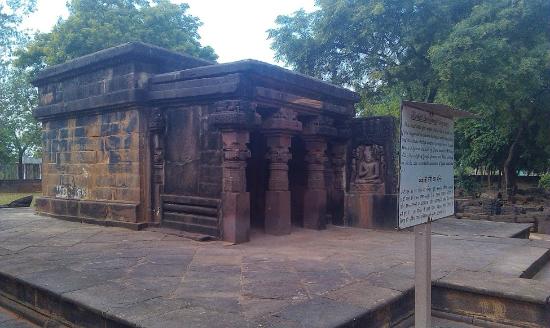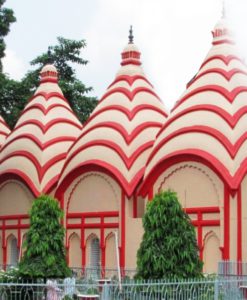No products in the cart.
The Kankali Devi Temple is often referred to as the Tigawa temple. It is one of the oldest temples of Devi Kali Maa known as one of the Shaktipeeth among Hindu pilgrims. Being so old it is one of the centers of devotion for Hindus. In Shardey Navratri and Chaitra Navratri peoples from all over the country came for Pooja & Darshan. There is one special thing about the statue of Maa Kali, during Navratri the neck of Maa Kali’s statue is slightly tilted from its original position. It is approximately 20Km from Bhopal.
Kankali Devi Temple, Tigawa,MadhyaPradesh
Alexander Cunningham visited Tigawa in 1873 and reported the antiquities of the town. He mentions a rectangular mound of 250 feet long and 120 feet wide which was entirely covered with large blocks of cut-stones. These stones were parts of ruins of various temples, all fallen ace but one which was in good state of preservation. He was told that the mound was utterly destroyed by a railway contractor who collected all the squared stones in a heap together to be used in railway construction. It is mentioned that two hundred carts were used to bring this heap to the foot of hill. This rapacious and destructive activity was stopped by an order from the Deputy Commissioner of Jabalpur but damage was done till that time. Cunningham estimated that the temple would have been about 19.5 feet square. There is an image of Vishnu of later period inside the temple. Various incarnations of Vishnu are depicted around the main image.
The temples were in varying sizes from 4 feet square to 15 feet square. The temples of modest size, 4 to 6 feet square, were covered on three sides and open on east. Temples of medium size, 7 to 10 feet square, were covered on all sides with a doorway on the eastern sides, whereas the large temples, from 10 to 15 feet square, were having an additional portico in front. All these temple, which ruins are only left, were having a shikhara with amalaka on top. No Buddhist or Jains antiquity was found by Cunningham.
It has a sanctum and an open portico supported on four pillars. The portico was covered with walls containing panels during a later period. It is covered with a flat roof. It is one of the few Gupta period temples that have survived. It is very similar to the Gupta period temple at Sanchi.
An image of Narasimha is placed inside the sanctum. The portico has an image of the Sheshashai Vishnu and another one of Chamunda (Kankali Devi). Attached to the temple is a large unusual Buddha-like image with snakes on the top.
An eighth-century CE inscription mentions the visit of Umadeva of Kanyakubja, son of Samanya Bhatta, who had come to worship at the temple of Setabhadra. There are also two inscriptions in Sankha Lipi.
1. On a face of a pillar – Descriptive List of Inscriptions in The Central Provinces and Berar – undated, dated to eighth century CE on paleographic study – in Sanskrit language – the inscription mentions about the visit of UmaDeva of Kanyakubja (Kanauj), son of Samanya Bhatta, to pay his devotion at the temple of Setabhadra (probably Svetabhadra).
2. There are two more pilgrim records, one is highly floriated and other very indistinct.
All in all, this square temple was the forerunner of stone temples of the Gupta dynasty. It is well preserved and is similar to Buddhist Temple 17 of Sanchi. It has an ardhamandapa, which was originally just a pathway. The walls on both sides of the ardhamandapa were attached later. The roof is flat and there is no shikhara. As in Sanchi, lions are sculpted on top of the pillars.Though getting to Sanchi 200 km south of Khajuraho, is difficult, it is worth a visit.
The temple is open for devotees from 4 AM to 12.30 PM and from 5 PM to 8 PM.
By Road
Tigawa is situated near Bahoriband at a distance of about 5-6 km. From Jabalpur, take NH7 which goes to Katni. After crossing Sihora, there is a turn towards Bahuriband. Tigawa is on the Bahuriband-Bakal road, state highway 31 after crossing Bahuriband. Tigawa complex is on the main road only and road condition is very good. There are few spots that the tourists could visit on the same day, namely, Chidia Tol and Risen. The trip to the temple is of one day, travelling from Bhopal to Kankali Mata mandir to Chidia Tol to Raise & back to Bhopal. So a total round figure of approximately 110Km travelling. The Trip is really great as it comprises of both picnic plus devotional spots.
By Rail
Sihori Railway Station is the nearest railway station at a distance of 30 km from the temple.
By Air
Jabalpur Airport is the nearest airport at a distance of 70 km from the temple.










